A Conversation with Andrea Romano, CEO of Rimadesio USA
When Rimadesio opened its new flagship in Miami, it marked a moment that blended Italian design heritage with the spirit of a rapidly evolving city. As Live in Italy Magazine’s architecture and design contributor, Sandra Diaz-Velasco visited the Biscayne Boulevard showroom on its opening week. Although Sandra is newly reintroduced to our audience in this role, she has long contributed to our design coverage at Salone del Mobile and Fuorisalone. Her perspective brings both a designer’s eye and a deep appreciation for Italian craftsmanship, sustainability, and material intelligence.
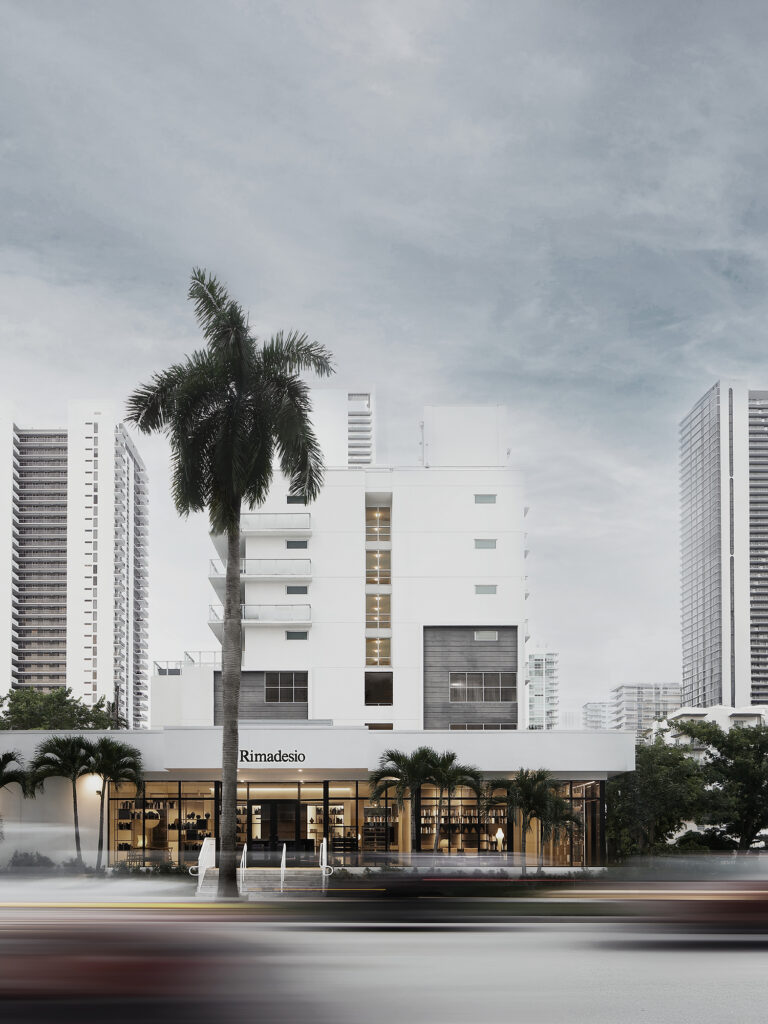
The Miami flagship is Rimadesio’s latest directly managed location, joining Milan, London, Paris, and New York. The building spans more than 3,000 square feet and expresses the company’s architectural DNA—coherence, precision, and harmony. Inside, visitors move through a sequence of spaces where glass, aluminum, walnut, raffia, and soft lacquers speak a shared design language. It feels less like a store and more like an immersive environment shaped by light, acoustics, and emotional quiet.
To understand the intentions behind the showroom, Sandra spent time with Andrea Romano, CEO of Rimadesio USA. Their conversation explored the brand’s Italian roots, its obsession with detail, and its dedication to sustainability. Romano also shared how the Miami flagship aims to serve as a design resource for both professionals and clients.
A Design Ecosystem Rooted in Coherence
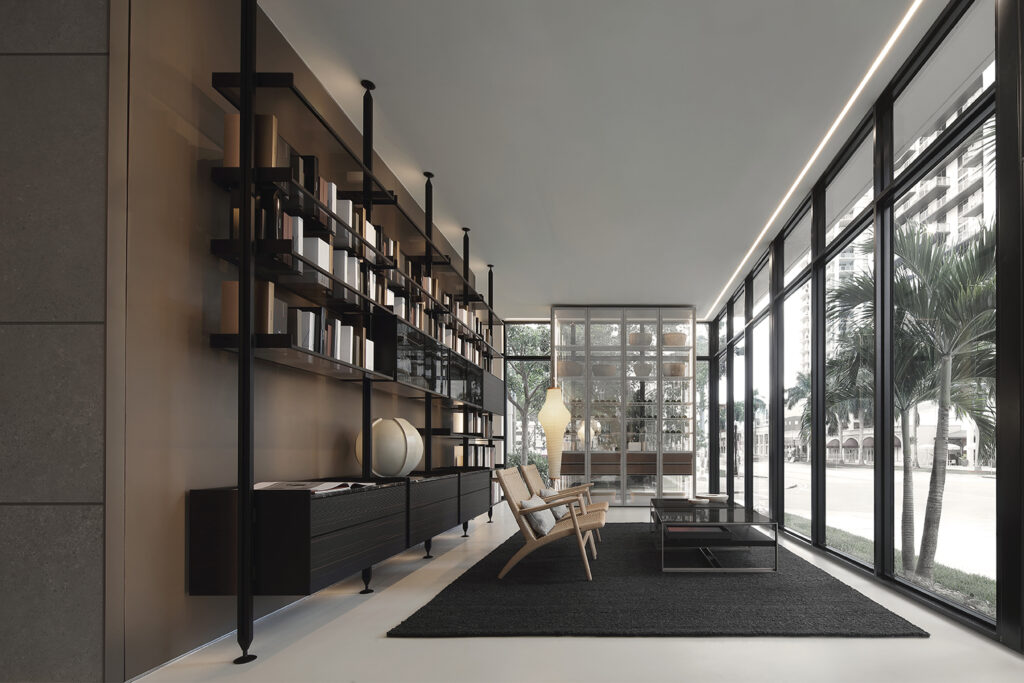
Rimadesio’s approach has always blended craft and engineering. Many of its signature systems—Modulor, Cover, Rialto, and Alambra—anchor the Miami space and form a continuous architectural rhythm. As Romano notes, the company elevates what might appear to be simple elements.
“We didn’t invent the door,” he said, “but we transformed it into a piece of design.”
Romano explained that Rimadesio’s longstanding material focus began more than forty years ago when the brand took glass and aluminum beyond hardware and into the language of architecture. That decision shaped everything that followed. Today, one art director, Giuseppe Bavuso, designs nearly every product, allowing the systems to “speak to each other” with integrity and consistency.
Inside the Miami Flagship: Harmony, Emotion, and Atmosphere
Sandra opened their conversation by noting the showroom’s sensory balance—subtle acoustics, gentle light, refined textures. Romano agreed that the experience was intentional.
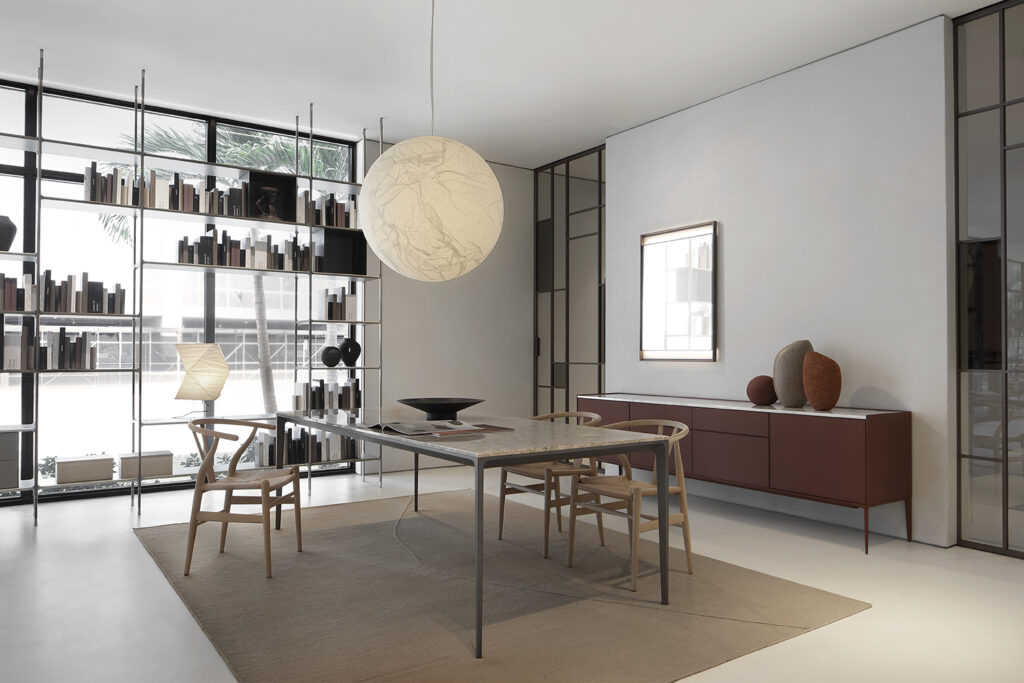
“The beauty is coherence,” he said. “You enter a home and the elements form one concept.”
He described how clients can move from living spaces to bedrooms and walk-in closets while feeling a unified aesthetic. The systems are architectural in scale, yet flexible enough to adapt to complex homes, offices, and hybrid environments.
Emotion plays a role too. Romano acknowledged that many clients sense something they cannot name.
“You don’t always see the detail,” he said. “You feel it.”
For Sandra, this emotional intelligence is a defining part of the brand. Throughout the showroom, she observed how quiet material layers—fabric acoustics, soft lacquers, warm tones—create a space that feels restorative. The Miami team, many of whom helped build the flagship, understand how to translate atmosphere into experience.
Timelessness Through Innovation
Durability and innovation coexist at Rimadesio. Romano emphasized that the brand’s systems are designed to last, yet they evolve constantly.
He remembered clients who once moved homes and took their Rimadesio doors with them. That level of longevity continues today, even as new materials, finishes, and configurations expand the collection.
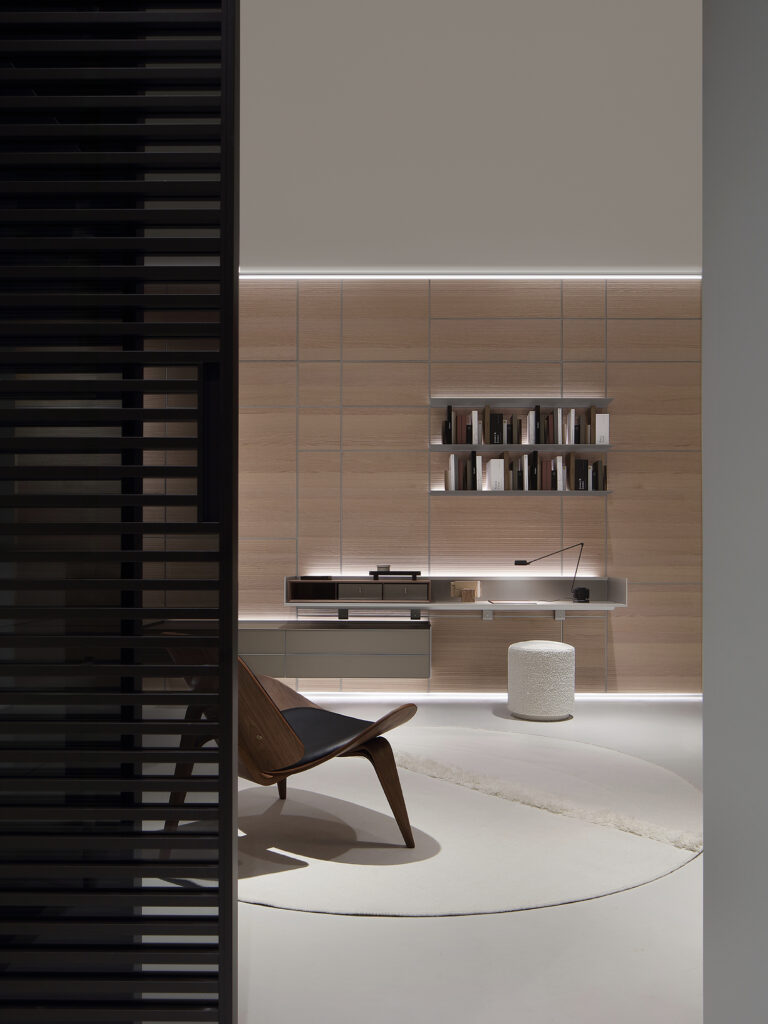
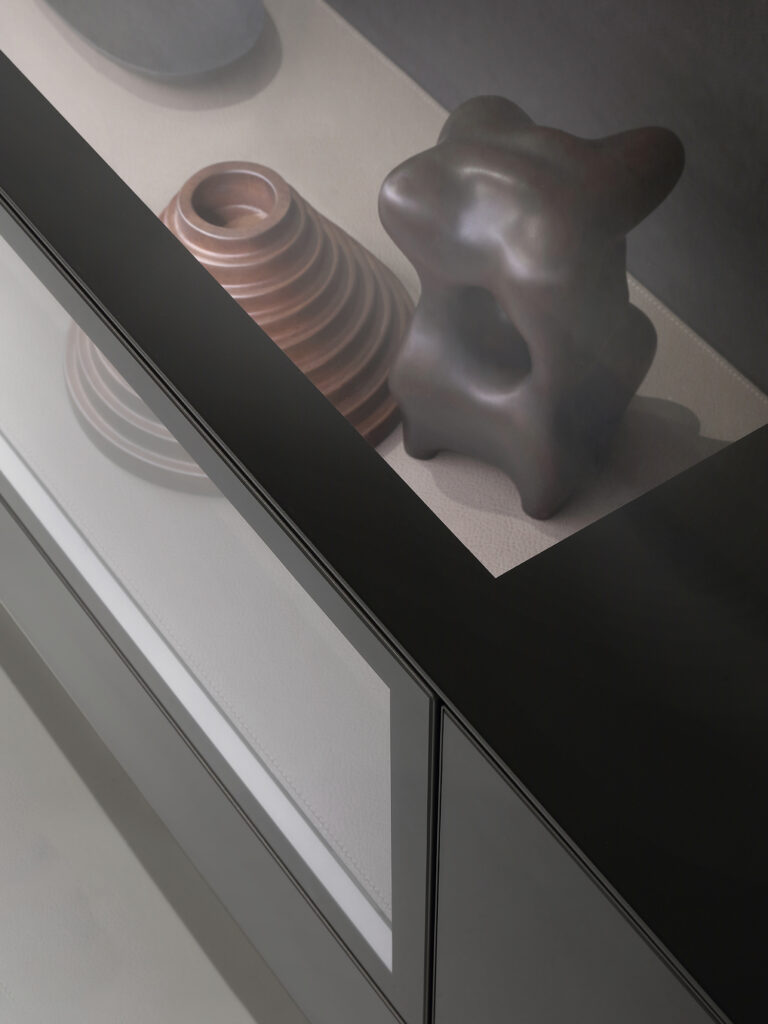
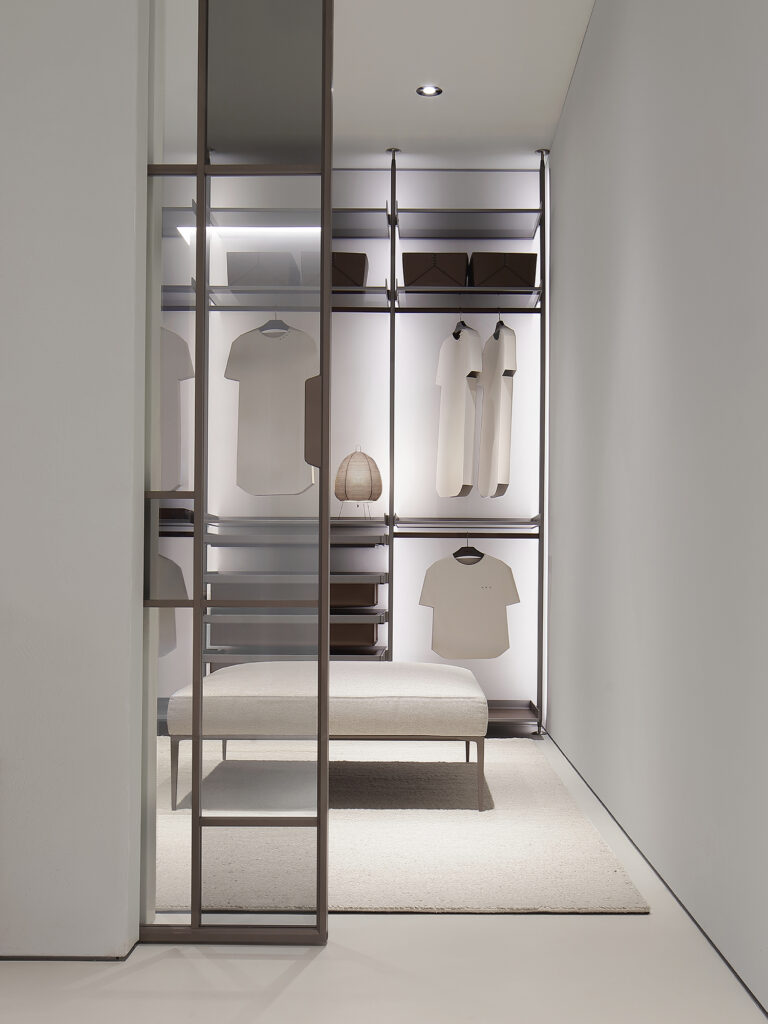

The company has tripled in size during the past 15 years. With growth comes responsibility. Romano said the technical office works tirelessly to refine details, ensure tolerance, and maintain precision. At the same time, he noted that not everything can be custom.
“We must keep coherence,” he said. “That is part of the integrity of the product.”
A Longstanding Commitment to Sustainability
Sustainability is central to Rimadesio’s identity. Sandra asked Romano how the company’s environmental philosophy has evolved. He reflected before answering, saying sustainability starts with people and daily decisions.
He then pointed to decades of action. The company began with recyclable materials—glass and aluminum. In the early 1990s, Rimadesio reached zero CO₂ emissions through extensive solar panel installations. Its packaging is fully recyclable, and employees receive incentives for carpooling or owning electric vehicles.
“We started because it was possible,” Romano said. “Now it is essential.”
R-Academy, the new in-showroom training space, also supports this mission by helping architects and designers understand finishes, materials, and light before making choices that impact long-term performance.
Why Miami, and Why Now
Rimadesio’s investment in Miami is both strategic and cultural. Romano pointed to the city’s growth, diversity, and openness to design.
Miami offers something rare: space. For clients coming from New York or other dense cities, the ability to shape larger interiors creates new possibilities for modular systems. Romano also noted Miami’s growing design literacy and its role as a bridge to Latin America.
He sees the Miami flagship as a connector of ideas—an Italian brand with global roots that values integrity, community, and continuity.
“Design is quality of life,” he said. “Miami understands that.”
A New Chapter for Italian Design in Miami

Rimadesio’s Miami flagship reflects the brand’s philosophy at every level—material clarity, architectural coherence, and sustainable intention. Through Sandra’s visit, the space reveals itself as more than a showroom. It is a design ecosystem where architects, designers, and clients can engage with Italian craftsmanship, explore modular innovation, and experience a sense of harmony that feels both functional and emotional.For more information, visit www.rimadesio.it or explore the new Miami flagship at 2601 Biscayne Boulevard.


